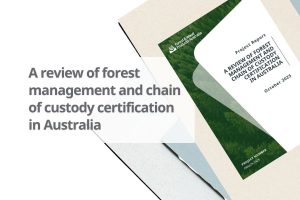The management of forest ecosystems to increase carbon storage is a global concern. Fire frequency has the potential to shift considerably in the future. These shifts may alter demographic processes and growth of tree species, and consequently carbon storage in forests.
This study examines how tree biomass and demography of a eucalypt forest regenerating after harvest is affected by two experimentally manipulated extremes in fire frequency (i.e., 3 year fire intervals vs. unburnt) sustained over a 23 year period. The rate of post-harvest biomass recovery of overstorey tree species, which constituted 90% of total living tree biomass, was lower within frequently burnt plots than unburnt plots, resulting in approximately 20% lower biomass in frequently burnt plots by the end of the study.
Significant differences in carbon biomass between the two extremes in frequency were only evident after >15–20 years of sustained treatment. These findings suggest that future shifts toward more frequent fire will potentially result in considerable reductions in carbon sequestration across temperate forest ecosystems in Australia.



